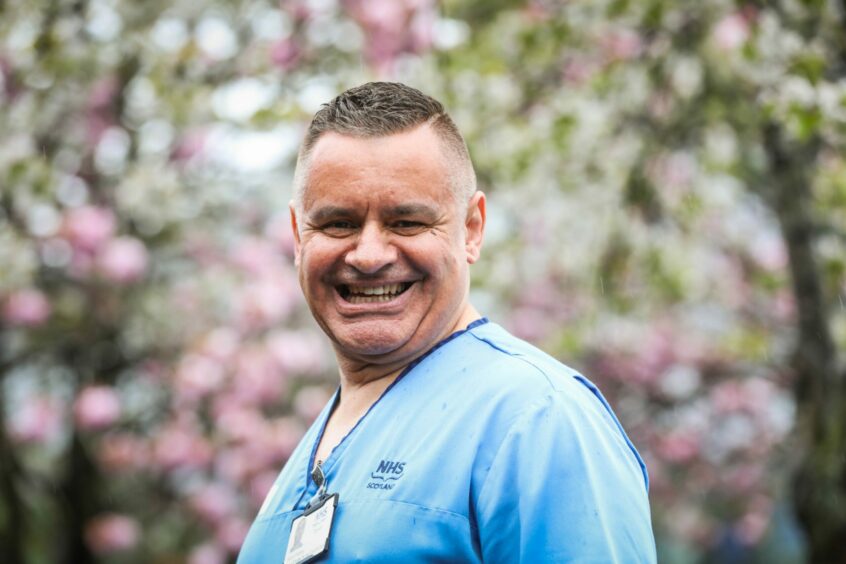
One patient Angus nurse Scott Peters will never forget is a young lady who had suffered a brain bleed and ended up in neuro intensive care.
The advanced nurse practitioner, who has worked in nursing for over 30 years, remembers this case in particular because he normally never sees patients again once they leave the hospital.
From late 1999 until 2012, he was working as a staff nurse in the neurosurgery ward – in ward 23B in Ninewells. It also served as an intensive care unit.
Scott’s nursing role in ‘miraculous case’
He said: “There was one girl I remember. She had a bleed or a brain injury and she was with us for months.
“She was a young girl either in her late 20s or early 30s.
“As a result of the brain bleed, she only had movement in her right arm and it was only part of her right arm she could move.
“I was one of the nurses who looked after her as part of a team when she was in neuro intensive care.”
Scott explained that when she was being ventilated a minimum of two nurses were needed to help turn her, to prevent pressure sores, and to help with her washing and dressing.
“Mentally she was still there – she could understand what we were saying,” he continued.
“She couldn’t speak to start with, but eventually her speech came back.”
Eventually she was discharged to the ward and went on to have rehabilitation in the brain injury unit.
Surprise visit from former patient
But the 58-year-old revealed he got a nice surprise when the patient in question came back to visit the ward a year and a half later.
“I can’t remember her name but I knew it was her as soon as I saw her!
“She walked in the ward and said: ‘Hi how are you Scott?”
“It was unbelievable.
“She chatted away non-stop and I was absolutely gob-smacked, shocked this was the same person!
“She said: ‘I was in that unit there wasn’t I? ‘I said ‘yeah do you want to come in?’
“She said ‘yeah’ and she ran round the ward and went quickly out again.
“I just thought wow. It was amazing to see someone make a miraculous recovery like that.”
When did Scott start working as a nurse?
Scott, who lives in Brechin, started training to be a nurse in August 1989.
In 1991 he began working on the wards at the age of 28.
When he first qualified from Ninewells College of Nursing he secured a job at Kings Cross Hospital in Dundee working in the AIDS Unit.
He was employed there for around a year and a half to two years before qualifying to become a staff nurse.
Working as a staff nurse at Stracathro Hospital
Scott managed to obtain a role as a staff nurse in theatre and recovery working at Stracathro Hospital for a year, near Brechin.
Then in August 1999, he started working in intensive care in Aberdeen Royal Infirmary before going on to work in the neurosurgery ward for ten years at Ninewells Hospital.
“There were two parts to neurosurgery,” he said.
“There was the main ward looking after patients with spinal injuries, brain tumours which had been operated on, brain abscesses, road traffic accident patients as well as patients who had been assaulted.
“My job would involve carrying out basic care with washing, meals and medication.
“But there was also the intensive care part of it as well.
“People who had maybe had an aneurysm or a bleed, you were responsible for setting up the ventilator for them and looking after them.
“A lot of people never made it so you were dealing with the families and talking to them about organ donation.”
Nursing in a challenging environment
While working in that environment was challenging, Scott said it was something he was able to adapt to.
“I think you became quite hardened. You were professional and focussed.
“Your main responsibility was to the patient and secondly to the family so you focussed on that.”
Scott dealt with a few interesting cases during his decade-long stint in the neurosurgery ward.
He explained: “My shift would start at 7.30pm that night and finish at 7.30am the next morning and I remember major cases coming in involving young people which would end up as murder.
“There were patients who had footprints on them where they had been stamped on, across their head and their chest, and the police would come in and I would point the footprints out to them.
“Sometimes you never knew what a patient’s name was because there was no identification on them.
“So they were a ‘Jane Doe’ or ‘John Doe’ until you were able to trace some ID.
“I can always remember finishing my shift at 7.30am and driving home then on the radio on Tay News it would mention this girl had been assaulted.
“I remember thinking ‘yeah that girl came into my ward’.”
Dealing with death on the ward
But as well as the positive outcomes and success stories, there were also some very sad cases where patients died.
And for Scott there was one which he can’t forget.
“I always remember this one young girl, who must have only been about eight or nine, whose father worked as a labourer on a building site and I don’t think he was wearing a safety helmet.
“There were these doors stacked at the building site and the six doors came down on his head.
“I remember his young daughter came up to me and gave me a big hug and whispered in my ear: ‘Look after my dad’.
“Her dad died maybe two days after that. I never saw her again. But that one always sticks in my mind.”
Scott’s night work as an advanced nurse practitioner
For the past 12 years Scott has been employed as an advanced nurse practitioner at Ninewells Hospital – working in hospital at night.
His shift starts at 8.30pm and finishes at 8.30am the next day.
He explained: “Hospital at night is a totally different role.
“If I am working in one area at night – which might be surgery, medicine or specialist services covering things like strokes or dermatology – I might be in charge of eight wards.
“I am the first point of contact but I will likely have three to four junior doctors working alongside me.”
Scott’s role involves co-ordinating cases as they come in – dealing with the priority ones first for example, a patient experiencing chest pain.
“Patients we deal with come in with a specific thing – for instance a broken leg – but then they develop something else.
“So I assess them, do all the various tests, take bloods, order x-rays and try to work out what is wrong with them and develop a plan of action.
“It’s quite a challenging and demanding role but I get a lot of job satisfaction from it.”
Stereotypical image of a nurse
A lot of things have changed since Scott qualified more than three decades ago – especially the stereotypical image of what a nurse looks like.
He said: “I can remember when I first started my nursing training in 1989 I went into this ironmonger’s in Brechin and I was chatting to one of the assistants.
“She said ‘what do you do?’ and I said: ‘I’m a nurse’ and she says: “Oh a male nurse!’
“I remember laughing to myself thinking – what does it look like?
“Certainly now male nurses are very much accepted and I don’t see it being a predominantly female role anymore.”
Being a nurse is rewarding
Scott is thinking about retiring possibly within the next three years, but he still recommends nursing as a career.
“If you like the career, it is a job for life.
“Nursing as a career has really opened up compared to when I was younger so I would definitely encourage people to go into the profession.
“It is very rewarding.”
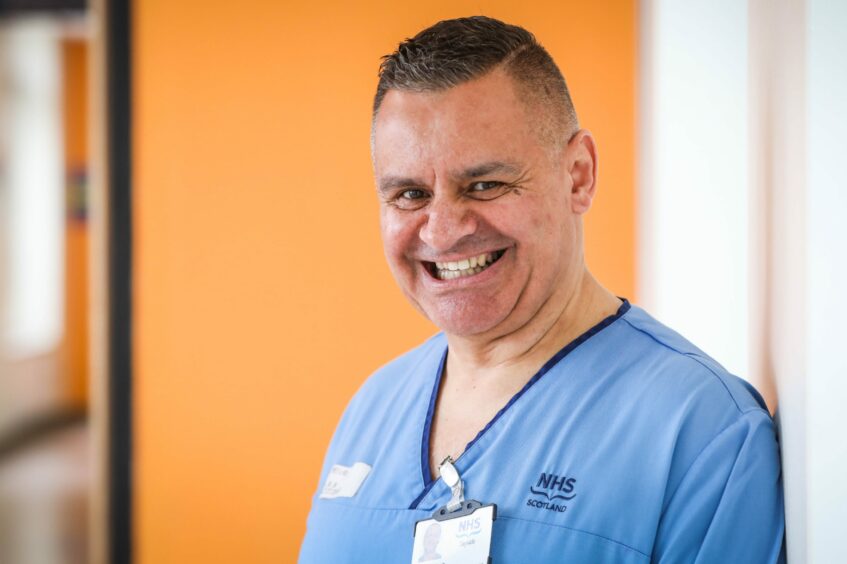
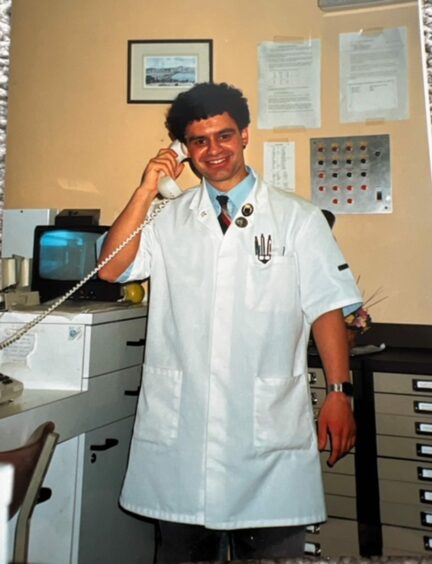
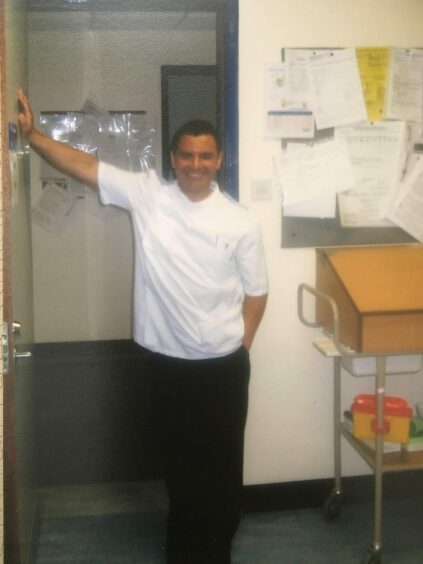
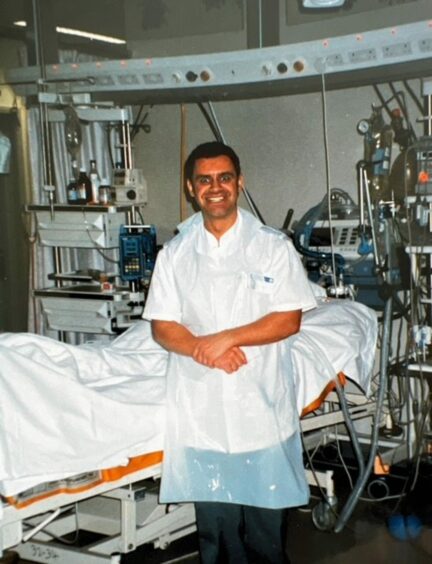
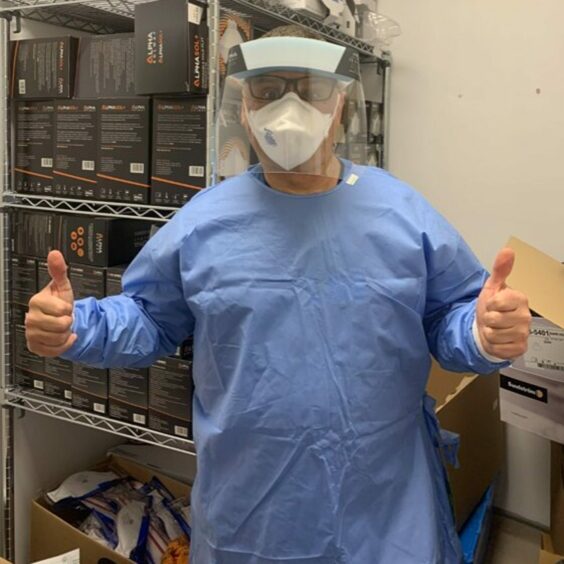
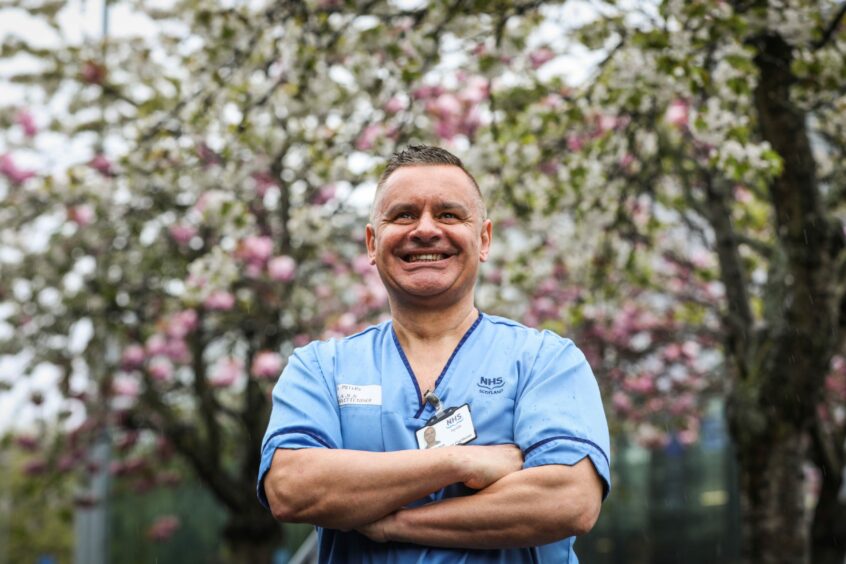
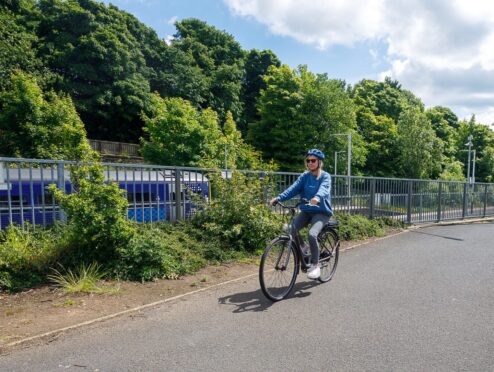
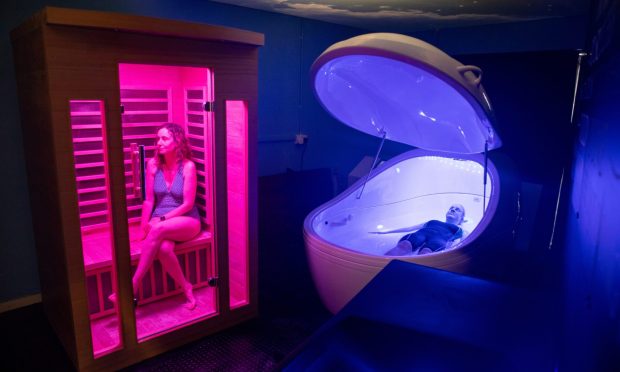

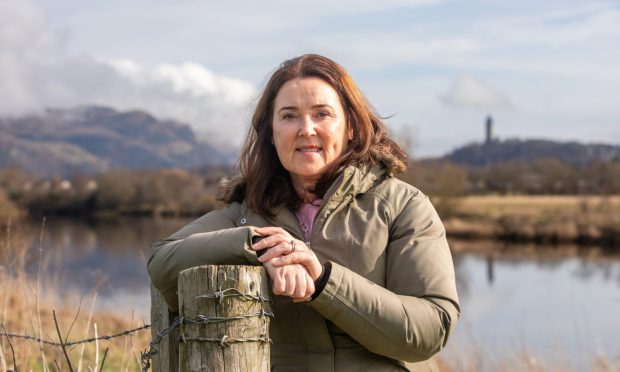
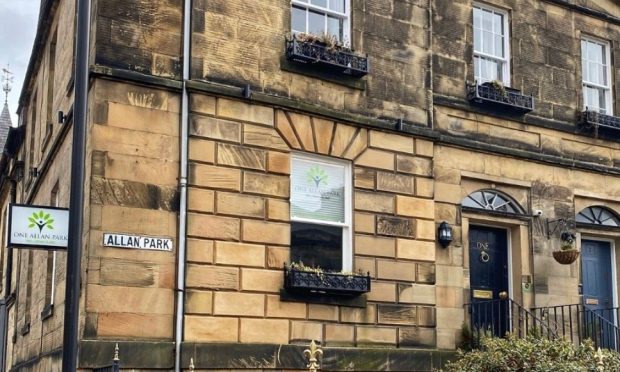


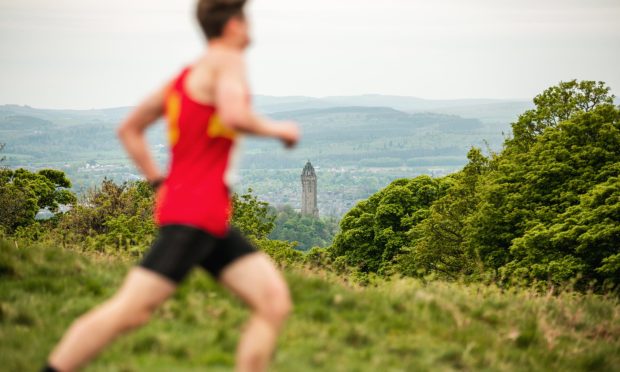
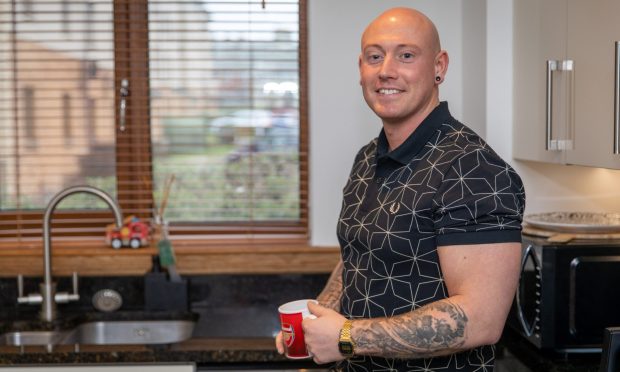
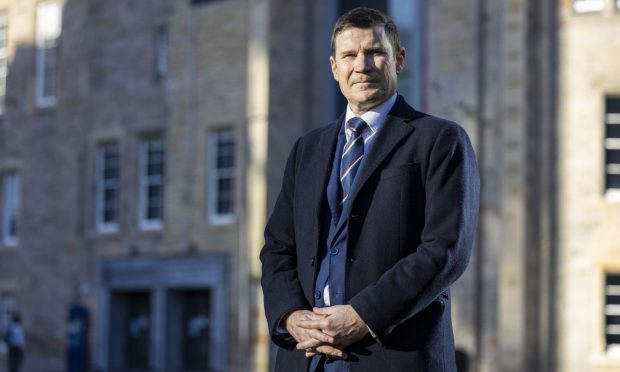
Conversation